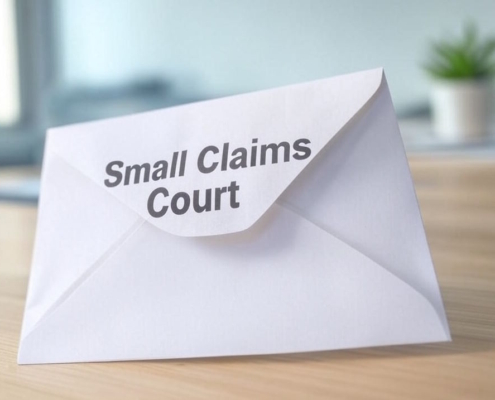How Does a Quiet Title Action Work?
The goal of a quiet title action, sometimes referred to as an action of quiet title, is to prove or resolve a property’s title through a civil court action, or lawsuit.
When there is a dispute over the title and the goal of the suit is to eliminate, or “quiet,” any objection or claim to the title, the case is known as a quiet title action. The end product is a definitive or unambiguous title.
Making Sense of a Quiet Title Action
When one party seeks to establish the legal ownership of real estate by suing another or other parties, this process is known as a quiet title action. The aim is to resolve the competing claims to the property through removing any uncertainty from the title and making the issue of ownership more clear.
In the aftermath of the quiet title action, the plaintiff and his or her heirs will enjoy ownership of the property thereafter, shielded from any future claims to ownership by third parties.
Uses of Quiet Title Actions
You can use quiet title action for a variety of purposes. A few examples of the most frequent are:
- Sale of an estate: When an owner dies, an estate sale may be necessary to settle any disputes about who gets what in terms of titled property, such as real estate. This is especially true if there is any doubt as to whether or not all beneficiaries have been informed about the sale.
- Lienholder Removal: This process helps settle disputes with mortgage lenders whose interests in the property were left unattended after paying off the loan.
- Problems with Title: To make it possible for third parties to place bids on a piece of property left vacant for a while by filling up any gaps in the title.
- Quitclaim Deeds: Transferring ownership of real estate through a quitclaim deed, where the prior owner renounces any claim to the property but makes no assurance that the title is free and clear.
- Adverse Possession: To transfer ownership of real estate in the event of an adverse possession, whereby one party occupies real estate that is not theirs by law in order to allege ownership.
- Easement and Boundary Disputes: This is about resolving problems with land access due to an easement or disagreements over property lines between individuals or government bodies.
Additional reasons to initiate a quiet title action include resolving property tax issues, rectifying surveying errors, preventing deceitful conveyance of property through force or counterfeit deed, resolving international treaty disputes, or addressing competing claims from lienholders, missing heirs, reverters, or remainders.
Methods for Filing a Quiet Title Action
It is important to assess the situation carefully before deciding to pursue a quiet title action. In that case, you can get a duplicate of the deed at the recorder’s or county clerk’s office. Draft the quiet title action complaint and submit it to the proper court with the help of a real estate lawyer (sometimes working with a realtor).
Therefore, the party asserting sole ownership of the property can sue anyone else who claims an interest in it through the quiet title action. The next step is for a judge to consider the case’s merits and, if found in favor, to render a ruling or court order. If the quiet title action is successful, the purported owner will have clear and quiet title and will be able to avoid any future challenges to their ownership.
From beginning to end, the time it takes to resolve a claim can range from thirty days to over a year, based on factors such as the claim’s complexity, the state where the action is filed, and the court’s current backlog.
Particular Factors to Think About
In most instances, the new owner does not receive the same degree of protection against the former owner through a quiet title action. Unless the prior owner received the property through a warranty deed and filed a lawsuit for defects upon delivery, the new owner cannot sue the former owner for problems with the property.
Quiet title actions also don’t fix every problem with a title. Title defects or specific claims may be the only ones they can resolve in certain jurisdictions.
Explanation of “Quieting a Title”
In real estate law, “quieting a title” means eliminating any challenges or competing claims to ownership.
What Does It Cost to File a Quiet Title Suit?
Costs associated with a quiet title action can range from $1,500 to $5,000 or even more, with the exact amount depending on the claim’s complexity and the state in which the action is filed.
What is the Process for Fighting a Quiet Title Action?
One way to defend oneself against a quiet title action is to gather evidence, such as a deed, that establishes your better claim and shows that the other party’s claim is unfounded or invalid. Going to a court hearing to argue for your title is a common part of this process. For defense purposes, it is advised to retain the services of an attorney who is both qualified and experienced.
In Conclusion
For cases where there are competing challenges or claims to the title of a property, the legal remedy is known as a quiet title action. It is not “quiet” if the title is unclear. This might happen as a result of estate sales, adverse possession, liens, easements, boundary disputes, or a break in the ownership chain. This course of action is similar to a lawsuit, and the outcome of the case can lead to a quiet title.































